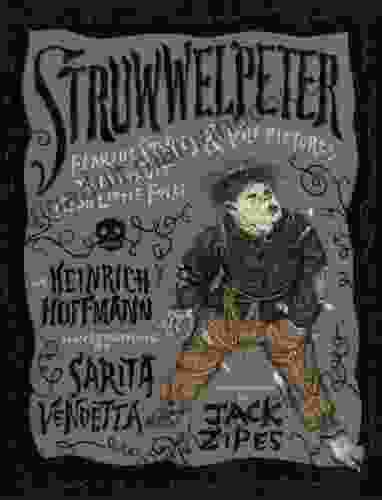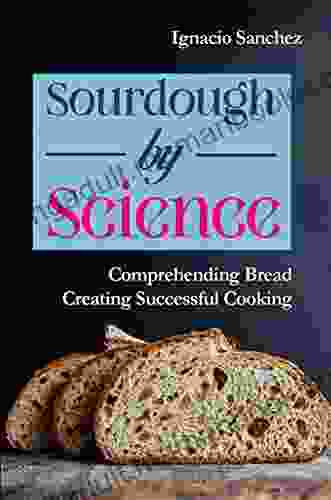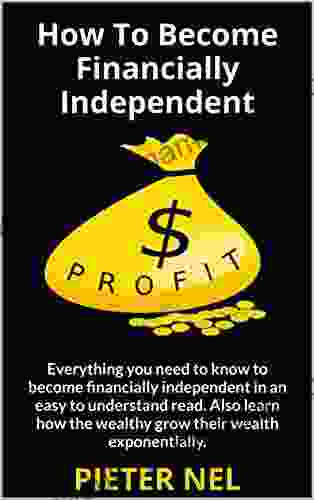Sourdough by Science: Comprehending Bread Creation for Successful Cooking

5 out of 5
| Language | : | English |
| File size | : | 85670 KB |
| Text-to-Speech | : | Enabled |
| Screen Reader | : | Supported |
| Enhanced typesetting | : | Enabled |
| Print length | : | 391 pages |
Sourdough bread, an ancient culinary delight, has captivated taste buds for centuries. While its characteristic tangy flavor and chewy texture allure many, the science behind its creation can seem intimidating. In this comprehensive guide, we will unveil the principles of sourdough bread making, empowering you to craft mouthwatering loaves with ease.
The Magic of Fermentation
At the heart of sourdough bread making lies the process of fermentation. When you combine flour and water, wild yeast and bacteria present in the air and on the flour begin to multiply. These microorganisms consume the sugars in the flour, releasing carbon dioxide and lactic acid as byproducts.
The carbon dioxide creates bubbles in the dough, causing it to rise. The lactic acid, on the other hand, imparts the sourdough bread its signature tangy flavor. The longer the dough ferments, the more pronounced the sourness becomes.
Mastering Hydration
Hydration, the ratio of water to flour, plays a crucial role in determining the texture of your sourdough bread. A dough with higher hydration will produce a loaf with a more open crumb and a chewier crust. Conversely, a dough with lower hydration will result in a denser loaf with a crispy crust.
The ideal hydration level for sourdough bread typically ranges between 65% and 75%. However, it can vary depending on the type of flour used and the desired texture.
The Art of Shaping
Once the dough has fermented, it's time to shape it. The shape you choose will influence the final appearance and texture of your bread.
Common sourdough bread shapes include:
- Rounds: A classic shape that provides an even crumb and a crispy crust.
- Batards: A long, narrow shape with a chewy crust and an open crumb.
- Bâtards: A shorter, wider version of the batard, with a similar texture.
- Boules: A round shape with a smooth, even crust and a dense crumb.
Baking Perfection
The final step in the sourdough bread making process is baking. The key to achieving a perfect bake is to create an environment that allows the bread to rise and develop its crust.
Here are some tips for baking sourdough bread:
- Preheat the oven: Preheat your oven to a high temperature, typically between 450°F and 500°F (230°C to 260°C).
- Use a Dutch oven: A Dutch oven creates a steamy environment that helps the bread rise and develop a crispy crust.
- Score the dough: Scoring the dough allows the steam to escape during baking, preventing the bread from bursting.
- Bake until golden brown: The bread is done baking when it has reached an internal temperature of 205°F to 210°F (96°C to 99°C).
With a thorough understanding of the science behind sourdough bread making, you can now embark on a culinary adventure and create mouthwatering loaves in the comfort of your own home. Experiment with different flours, hydration levels, and shaping techniques to discover your perfect sourdough recipe.
Remember, the joy of sourdough bread making lies in the process itself. Embrace the learning curve, enjoy the experimentation, and savor the fruits of your labor with each delicious slice of sourdough bread you create.
5 out of 5
| Language | : | English |
| File size | : | 85670 KB |
| Text-to-Speech | : | Enabled |
| Screen Reader | : | Supported |
| Enhanced typesetting | : | Enabled |
| Print length | : | 391 pages |
Do you want to contribute by writing guest posts on this blog?
Please contact us and send us a resume of previous articles that you have written.
 Top Book
Top Book Novel
Novel Fiction
Fiction Nonfiction
Nonfiction Literature
Literature Paperback
Paperback Hardcover
Hardcover E-book
E-book Audiobook
Audiobook Bestseller
Bestseller Classic
Classic Mystery
Mystery Thriller
Thriller Romance
Romance Fantasy
Fantasy Science Fiction
Science Fiction Biography
Biography Memoir
Memoir Autobiography
Autobiography Poetry
Poetry Drama
Drama Historical Fiction
Historical Fiction Self-help
Self-help Young Adult
Young Adult Childrens Books
Childrens Books Graphic Novel
Graphic Novel Anthology
Anthology Series
Series Encyclopedia
Encyclopedia Reference
Reference Guidebook
Guidebook Textbook
Textbook Workbook
Workbook Journal
Journal Diary
Diary Manuscript
Manuscript Folio
Folio Pulp Fiction
Pulp Fiction Short Stories
Short Stories Fairy Tales
Fairy Tales Fables
Fables Mythology
Mythology Philosophy
Philosophy Religion
Religion Spirituality
Spirituality Essays
Essays Critique
Critique Commentary
Commentary Glossary
Glossary Bibliography
Bibliography Index
Index Table of Contents
Table of Contents Preface
Preface Introduction
Introduction Foreword
Foreword Afterword
Afterword Appendices
Appendices Annotations
Annotations Footnotes
Footnotes Epilogue
Epilogue Prologue
Prologue Lee Reich
Lee Reich Olivia Clark
Olivia Clark Raymond Boyd Dunn
Raymond Boyd Dunn Anthea Peries
Anthea Peries Christopher Calkins
Christopher Calkins R Bruce Hoadley
R Bruce Hoadley Helene S Herbert
Helene S Herbert Dorothy Sheldon
Dorothy Sheldon Allison Bruning
Allison Bruning Hrishikesh Goswami
Hrishikesh Goswami Seana Kelly
Seana Kelly Beth Mccord Kobett
Beth Mccord Kobett Geraldine Moorkens Byrne
Geraldine Moorkens Byrne Allyson Reedy
Allyson Reedy Jon Gertner
Jon Gertner Jennifer L Armentrout
Jennifer L Armentrout Christopher Tapp
Christopher Tapp Joseph Bathanti
Joseph Bathanti Allison Lawrence
Allison Lawrence Amanda Jernigan
Amanda Jernigan
Light bulbAdvertise smarter! Our strategic ad space ensures maximum exposure. Reserve your spot today!

 Banana YoshimotoUnveiling the Enchanting World of Western Romance: Contemporary Fiction with...
Banana YoshimotoUnveiling the Enchanting World of Western Romance: Contemporary Fiction with... Elias MitchellFollow ·2.5k
Elias MitchellFollow ·2.5k T.S. EliotFollow ·17.6k
T.S. EliotFollow ·17.6k Devin RossFollow ·2.2k
Devin RossFollow ·2.2k George R.R. MartinFollow ·10.9k
George R.R. MartinFollow ·10.9k Neal WardFollow ·9k
Neal WardFollow ·9k Colt SimmonsFollow ·3.3k
Colt SimmonsFollow ·3.3k Logan CoxFollow ·7.5k
Logan CoxFollow ·7.5k Anton ChekhovFollow ·16.6k
Anton ChekhovFollow ·16.6k

 Yukio Mishima
Yukio MishimaUnveiling the Zimmermann Telegram: A Pivotal Document in...
The Zimmermann Telegram, a diplomatic...

 George Martin
George MartinFearful Stories and Vile Pictures to Instruct Good Little...
In the annals of children's literature, few...

 Grant Hayes
Grant HayesJessica the Viscount Wallflower: A Tale of Transformation...
In the opulent ballrooms and glittering...

 Jerome Blair
Jerome BlairThe Economics of the Global Defence Industry: A...
The global...

 Blake Kennedy
Blake KennedyBreath of Heron - A Window into the Poetic Depths of...
In the realm of...
5 out of 5
| Language | : | English |
| File size | : | 85670 KB |
| Text-to-Speech | : | Enabled |
| Screen Reader | : | Supported |
| Enhanced typesetting | : | Enabled |
| Print length | : | 391 pages |












